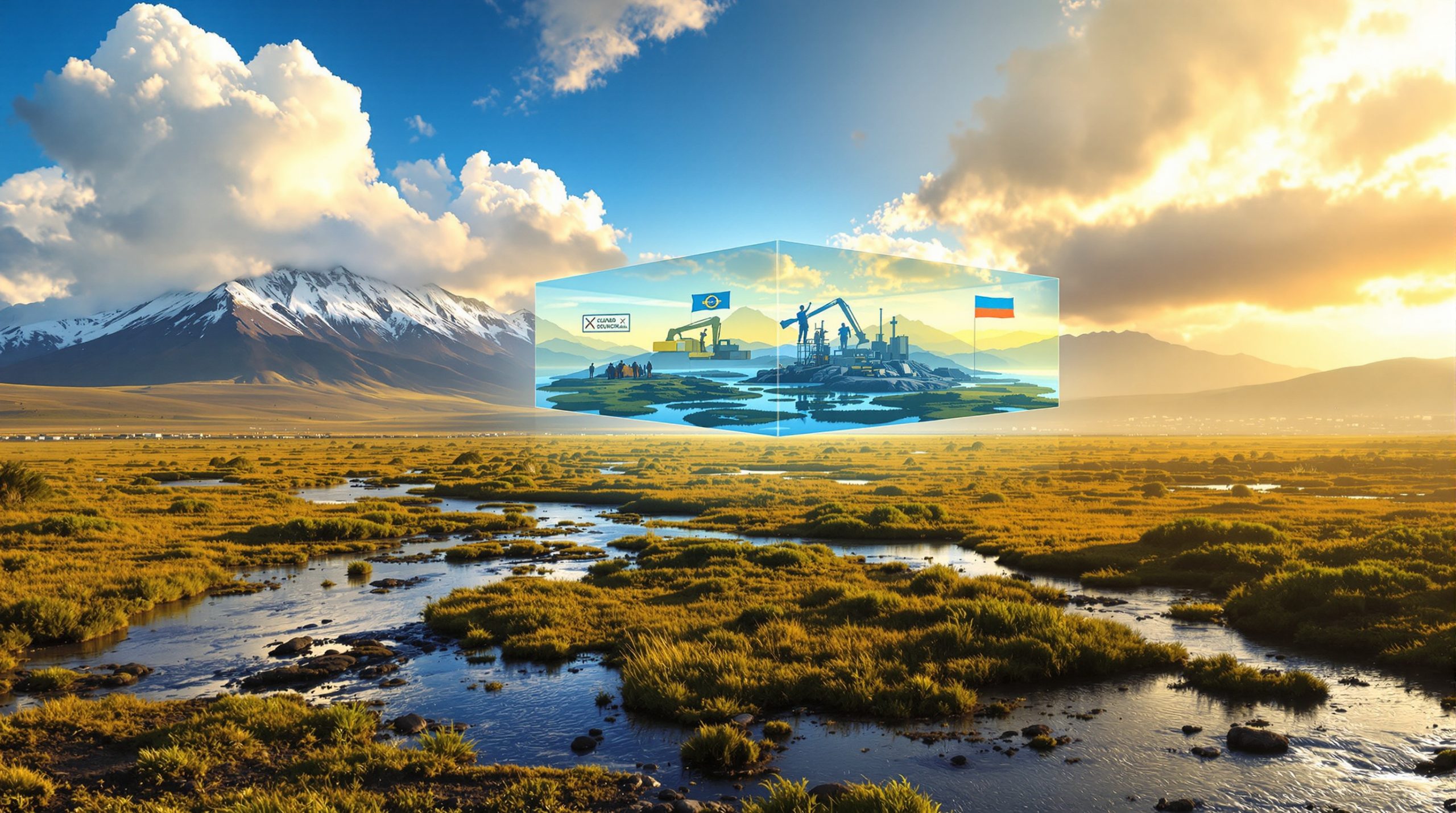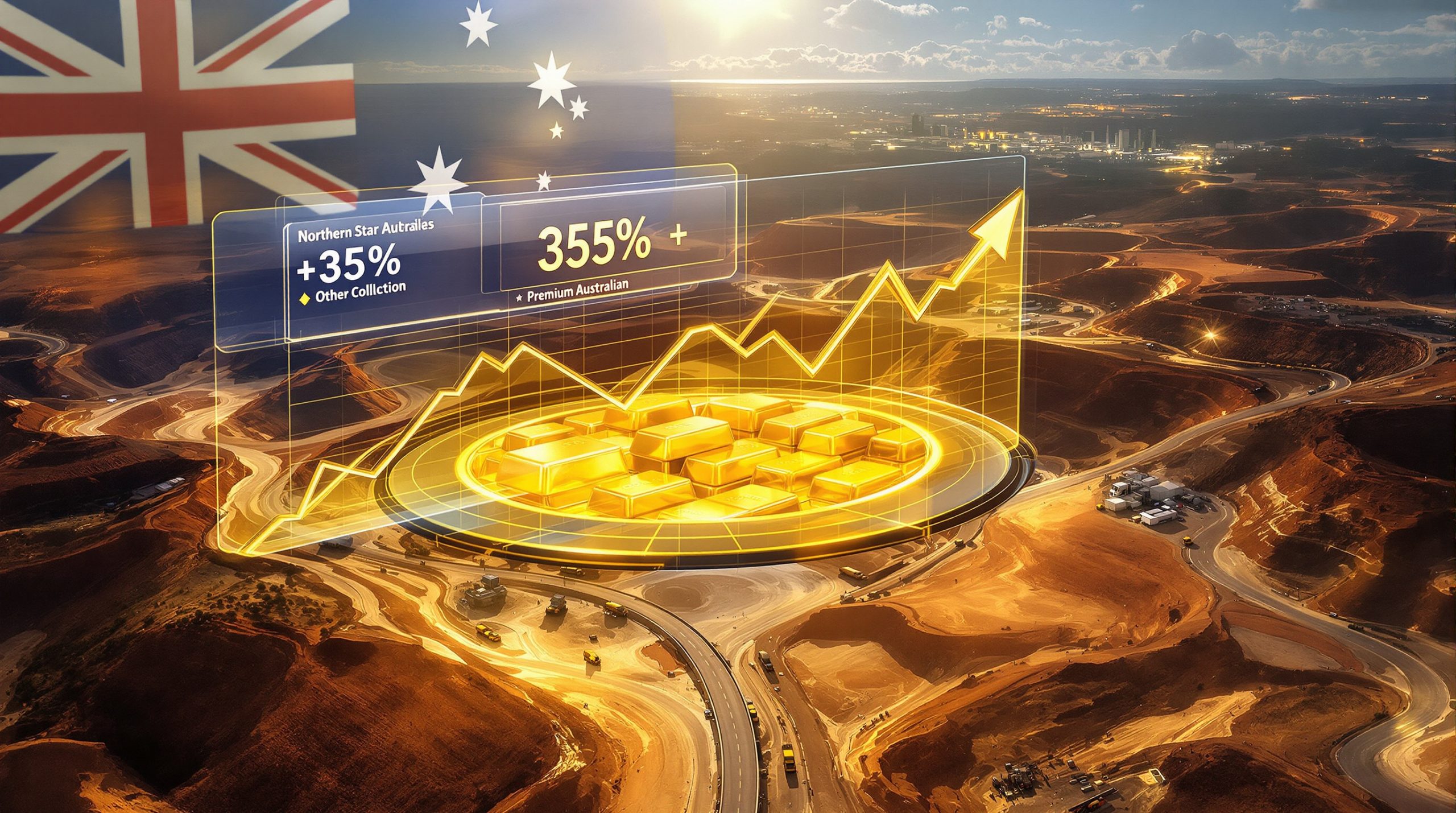What Is the Resourcing Australia's Prosperity Initiative?
The Resourcing Australia's Prosperity Initiative represents a landmark $3.4 billion investment by the Australian Government spanning 35 years (2024-2059) to secure the nation's resource future through comprehensive geoscience mapping and assessment. This generational commitment aims to position Australia strategically in the global transition to net-zero emissions while strengthening domestic industries and creating sustainable economic opportunities.
Led by Geoscience Australia, this program will transform understanding of Australia's mineral, energy, and groundwater resources through advanced mapping, data collection, and sophisticated analysis that will guide exploration, investment, and resource management decisions for decades to come.
As Dr. Andrew Heap, Chief of Geoscience Australia's minerals, energy and groundwater division, explains: "This investment aims to help address key challenges for Australia, our economy and global resource markets, the net zero transition, sovereign capability and geopolitics."
The initiative represents more than just data collection—it's a strategic framework for Australia's resource sector transformation during a period of profound global change in energy and resource demands.
Why Australia Needs This Generational Investment
Australia stands at a critical juncture in its resource development journey. As global markets increasingly demand materials essential for renewable energy technologies and low-carbon solutions, the nation faces both unprecedented challenges and opportunities.
"We are at a critical time for the resources sector in Australia. If we're to embrace the opportunities before us, we also need to address the challenges that are facing us," notes Anthony Schofield, Acting Principal Science Adviser at Geoscience Australia.
These challenges include:
Energy Transition Demands: The global shift toward renewable energy technologies requires vast quantities of critical minerals and strategic materials that Australia possesses in abundance.
Economic Transformation: Australia's traditional resource strengths must evolve to meet changing global demands, including developing new supply chains for critical minerals.
Supply Chain Security: Growing geopolitical tensions highlight the need for secure, reliable resource supply chains, with Australia positioned as a trusted supplier.
Climate Resilience: Sustainable groundwater management becomes increasingly vital in a changing climate, with approximately 80% of Australians relying on groundwater as their primary water source.
First Nations Engagement: Respectful collaboration with Aboriginal and Torres Strait Islander peoples is essential for responsible resource development that benefits all Australians.
The initiative addresses these challenges by providing comprehensive geoscientific data that will derisk exploration, attract investment, and guide sustainable development decisions across Australia's vast and largely underexplored terrain.
Four Interconnected Components Driving the Initiative
The program is structured around four strategic components that work together to maximize impact and deliver comprehensive outcomes:
1. National Resource Assessments
These assessments provide the framework for all pre-competitive geoscience work by identifying where resources are located and their development potential. Key focus areas include:
Critical Minerals and Strategic Materials: Mapping all 36 critical minerals across Australia, with initial focus on rare earth elements (2026), copper (2027), and priority battery minerals in subsequent years.
Geological Storage: Assessing hydrogen and carbon dioxide storage potential nationwide, with particular attention to identified hydrogen hubs where government investment is stimulating industry development.
Groundwater Systems: Mapping all Australian groundwater systems to support industries, communities, and environmental management through a National Hydrogeological Inventory covering 42 groundwater provinces.
Offshore Renewable Energy: Identifying suitable locations for offshore renewable energy infrastructure based on seabed geology and geomorphology, focusing initially on declared wind energy zones in Bunbury (Western Australia) and Hunter-Illawarra (New South Wales).
These assessments will culminate in comprehensive national resource atlases and prospectuses that provide holistic views of commodity opportunities, including existing resources, mine waste potential, byproduct opportunities, and new exploration targets.
2. Australia-wide Geoscience Data
This component provides the foundational data that enables national mapping of resource potential. It involves:
Maximizing Existing Data: Curating and synthesizing decades of collected information into accessible, usable formats, including a national compilation of industry exploration geochemistry data.
Delivering New National Coverages: Creating next-generation geophysical datasets including:
- National passive seismic models derived from the OzSeis program with instruments spaced at 200km intervals across the country
- Modernized Australian Fundamental Gravity Network providing absolute gravity measurements
- Completion of the AusAEM airborne electromagnetic survey at 20km spacing across the continent
Integrated Interpretations: Translating raw data into thematic maps and 3D geological models, building toward a national 3D geology map of Australia by 2031.
Pip Richter, Director of National Seabed Mapping at Geoscience Australia, emphasizes the multi-purpose nature of these datasets: "One of the things that really makes it worth putting the time and effort into really curating these data sets into comprehensive databases is that they become available to other people to answer more questions than we ever could ourselves."
These comprehensive datasets serve multiple purposes beyond resource exploration, supporting innovation and decision-making across numerous sectors.
3. Deep Dive Regional Studies
These intensive regional investigations "throw the book" at specific areas to thoroughly understand their geology and resource potential. They involve:
Targeted High-Resolution Data Collection: Acquiring detailed geophysical, geochemical, and geological data in promising frontier regions.
Testing Resource Predictions: Validating national-scale assessments through detailed regional analysis.
Stakeholder Collaboration: Working with local reference groups to ensure responsible and effective program delivery.
Current deep dive projects include:
Delamerian Project (Southeastern Australia): Unraveling 500 million years of geological history across several states, with delivery expected in 2026. This project aims to unify the understanding of geology across disconnected belts spanning South Australia, New South Wales, and Victoria.
Birrindudu Project (Northwestern Australia): Investigating a frontier cross-border region between Western Australia and Northern Territory, with completion planned for 2029. This includes the Birrindudu airborne electromagnetic survey currently being acquired.
Georgetown-Julia Creek Region (Queensland): Recently announced as the third deep dive, focusing on critical minerals potential and important groundwater systems. This region features the Bajamulla-Cudden Seismic Reflection Survey delivering over 800 kilometers of deep crustal seismic reflection data.
Chris Lewis, Director of Regional Geology and Drilling at Geoscience Australia, notes: "The activities that are undertaken by one component… one action will always support another… we might take national scale pre-competitive models or maps and then go and test them within the deep dive areas. We'll then take those learnings from the deep dive areas, those data, provide them into the national scale data sets, rerun those models and maps, and so continuously improve."
4. Data Delivery and Engagement
This component ensures that the initiative's outputs reach and benefit all stakeholders through:
Streamlined Data Access: Making information accessible to diverse users beyond the exploration sector through maintained and curated national geoscience databases.
User-Centered Design: Developing delivery platforms that meet the needs of technical and non-technical users, including the GeoInsight platform and digital atlas story maps.
First Nations Collaboration: Building genuine partnerships with Aboriginal and Torres Strait Islander peoples, including establishing a First Nations Advisory Group by the end of 2024.
Melissa Harris, CEO of Geoscience Australia, emphasizes: "As the nation's trusted source of geoscience, we turn Earth science into practical outcomes for industry, government, and communities."
Key Deliverables and Timelines
The initiative's first decade (2024-2034) will deliver several flagship products:
| Year | Key Deliverable |
|---|---|
| 2026 | Rare Earth Elements National Commodity Prospectus |
| 2026 | Delamerian Project Completion |
| 2027 | National Hydrogen Storage Assessment |
| 2027 | Copper National Commodity Prospectus |
| 2027 | Shipwreck Trough CO₂ Storage Assessment |
| 2027 | National Passive Seismic Models |
| 2029 | Birrindudu Project Completion |
| 2031 | National 3D Geology Map of Australia |
These deliverables provide the groundwork for future resource development while building Australia's scientific capabilities in geoscience. The structured timeline ensures progressive advancement of knowledge that builds upon previous discoveries and techniques.
Benefits for Multiple Stakeholders
The initiative creates value for diverse stakeholders across Australia:
For Industry
- Reduced exploration risk through pre-competitive data
- Identification of new resource frontiers
- Support for investment decisions
- Streamlined access to high-quality geoscience information
The data will help mineral explorers target their activities more effectively, reducing costs and improving discovery rates, particularly for critical minerals essential to the renewable energy transition.
For Government
- Evidence base for policy and regulatory development
- Support for land use planning and management
- Enhanced understanding of groundwater systems
- Foundation for sustainable resource development
State, territory, and federal agencies will benefit from shared data resources that help balance competing land use priorities and resource management challenges.
For Communities
- Information to support local decision-making
- Tools for natural resource management
- Opportunities for economic development
- Engagement in resource planning processes
Regional communities will gain better understanding of local resources and environmental conditions, empowering more informed participation in development decisions.
For First Nations Peoples
- Collaborative partnerships respecting connection to country
- Support for economic self-determination
- Informed decision-making about land and sea country
- Skills development and knowledge exchange
The initiative recognizes the unique relationship Aboriginal and Torres Strait Islander peoples have with country and seeks to create meaningful partnerships that respect traditional knowledge.
First Nations Engagement: A Core Commitment
A central focus of the resourcing Australia's prosperity initiative is building genuine collaborative partnerships with Aboriginal and Torres Strait Islander peoples. Key elements include:
First Nations Advisory Group: Providing culturally informed strategic advice to guide program delivery, with establishment planned by the end of 2024.
Place-Based Partnerships: Developing tailored approaches for different regions and communities to address local priorities and needs.
Capability Building: Supporting First Nations communities to collect, use, and interpret geoscience data.
Knowledge Respect: Acknowledging the enduring connection and contribution of First Nations peoples to country.
Jess Scott, Director of First Nations Strategy and Partnership at Geoscience Australia, highlights an example of this work: "We've already commenced work in the Lake Basin region of Queensland. We're working with the Lake Basin Ranger program to build ranger skills in sampling groundwater from bores and undertaking field analysis in groundwater properties."
These efforts align with the National Agreement for Closing the Gap and reflect Geoscience Australia's commitment to respectful collaboration with First Nations communities.
Strengthening Australia's Resource Future
The Resourcing Australia's Prosperity Initiative represents a transformative investment in Australia's geoscientific understanding that will help secure the nation's role as a global resource leader while supporting domestic industries and communities.
By providing comprehensive data on Australia's mineral, energy, and groundwater resources, the initiative will:
- Accelerate Discovery: Identifying new resource opportunities to support the net-zero transition
- Attract Investment: Derisking exploration through high-quality pre-competitive data
- Guide Sustainable Development: Informing responsible resource management decisions
- Support Communities: Providing information for local planning and economic development
- Build Partnerships: Engaging with diverse stakeholders, including First Nations peoples
Minister Madeleine King emphasizes the significance of this work: "The Albanese government's $3.4 billion 35-year investment is a generational investment in geoscience and will help grow our resources industry to create jobs and wealth for future generations."
As Australia navigates the challenges and opportunities of the global energy transition, this generational investment in geoscience will help ensure the nation continues to prosper while contributing to a sustainable global future.
Further Exploration
Readers interested in learning more about Australia's resource development initiatives can explore additional resources through Geoscience Australia's resourcing program or by emailing rapinitiative@ga.gov.au.
The initiative will conduct regular webinars and information sessions to keep stakeholders informed about progress and upcoming work. Those interested can register to receive the Resourcing Australia's Prosperity Initiative newsletter to stay updated on developments.
This comprehensive approach to understanding Australia's resource potential represents not just an investment in data collection, but a strategic commitment to the nation's economic and environmental future in a rapidly changing global landscape. Furthermore, the mineral exploration importance cannot be overstated in this context, as it forms a crucial component of Australia's resource strategy.
The mining industry evolution is directly supported by this initiative's comprehensive geoscience data, enabling more efficient resource targeting and development. Additionally, the initiative will enhance modern mine planning by providing detailed geological insights that reduce risk and improve sustainability outcomes.
Comprehensive drilling programs overview resources will benefit from the initiative's deep dive regional studies, offering geological context that can significantly improve exploration success rates. As the mineral deposit tiers guide illustrates, understanding the geological context is essential for effective resource development, making the resourcing Australia's prosperity initiative a critical investment in the nation's future.
Want to Capitalise on Australia's Next Major Mineral Discovery?
Discovery Alert's proprietary Discovery IQ model delivers real-time notifications on significant ASX mineral discoveries, turning complex geoscientific data into actionable investment insights. Understand why major discoveries like those that could emerge from Australia's $3.4 billion Prosperity Initiative can generate substantial returns by visiting Discovery Alert's dedicated discoveries page.




